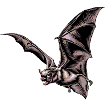Museum, University of Nebraska State

University of Nebraska State Museum: Mammalogy Papers
Document Type
Article
Date of this Version
2013
Citation
Pp. 62-73, 330, in Biodiversité insulaire: la flore, la faune et l’homme dans les Petites Antilles, editors J.-L. Vernier and M. Burac. France: Schoelchers, Martinique, Direction de l'Environnement, de l'Aménagement et du Logement de Martinique et Université des Antilles et de la Guyane, 335 pp.
Abstract
The chiropteran fauna of the Lesser Antilles consists of 27 species. The diversity of this fauna is low when compared with Neotropical faunas of large continental islands or at sites on the adjacent mainland, however, the Lesser Antillean fauna contains 11 species endemic to these islands making it worthy of large-scale conservation efforts. At the southern end of the Lesser Antilles, the biological limit of the Lesser Antillean bat fauna is marked by Koopman’s Line. To the south of this line, the bat faunas of the Grenadines and Grenada are composed of South American and widespread species of bats. The central Lesser Antillean islands have been grouped as the “Lesser Antillean Faunal Core.” The bat faunas of these islands are characterized by the presence of 9 or more species and several endemic species that occur on only one or two of these islands. The faunas of the northern Lesser Antillean islands are united into the “Northern Antillean Faunal Area” and share the same eight species of bats. The conservation of bats is critical not only to the biodiversity that they represent, but to the maintenance of biodiversity of other fauna and flora. The maintenance of chiropteran fauna can best be served by three actions— preservation of caves, preservation of forest diversity, and restoration of hydrological systems.


Comments
Copyright 2013, Université des Antilles et de la Guyane. Used by permission.